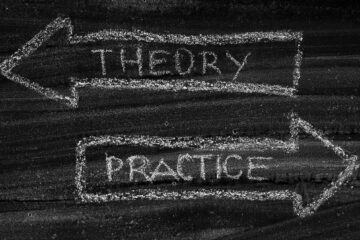Cross-posted on Education Week
For more than forty years, David Kirp has been one of our most incisive, original and refreshingly literate scholars writing about American education. Improbable Scholars: The Rebirth of a Great American School System and a Strategy for America’s Schools, Kirp’s newest book, shows that he has lost none of his magic.
At one level, the book tells the story of the Union City school district in New Jersey. Union City, right across the Hudson from Manhattan, is a gritty low-income community whose schools enroll mostly Hispanic kids. But, after years of patient effort by the leaders of the city and the district, those low-income, minority students are now achieving at the same levels as their much more fortunate suburban counterparts statewide, a stunning achievement. Ninety percent graduate and 60 percent go on to college. In the last chapter of the book, Kirp described two other school districts, very different from Union City, in which poor and minority students are also performing at comparable levels.
The question, of course, is how they did it. Those of you who have read Surpassing Shanghai will recall that, at the end of that book, I listed the principles that typically underlie the policies and practices of the countries with the most successful education systems. Among those principles are the following: putting more financial resources behind students who are harder to educate than students from more fortunate backgrounds, creating a strong system of early childhood education that assures that students begin formal schooling ready for the program offered in the first grade, doing whatever is necessary to raise expectations for student achievement to high levels, developing instructional systems that include curriculum frameworks that prescribe what topics will be studied in all the core subjects in the curriculum–grade by grade–from kindergarten through high school, making sure that school faculty have the training and support they need to provide the instruction needed by the students to progress at the rate called for by curriculum framework., creating an environment in which teachers are treated like professionals and are expected to collaborate with one another to continually improve the outcomes for students, and, finally, working over time to weld all the elements of the system into a coherent whole.
You guessed it. I just took this seemingly unrelated detour from my account of Kirp’s book because, as Kirp looks across the three American districts whose students are doing so well, the strategies he identifies as the key to their success turn out to map in detail to the policies and practices that explain the success of the countries with the highest achievement and the greatest equity in the world.
Here is something to think about, though. Closing the gap between the bottom students and average students in the United States is a remarkable achievement. But it is important to remember that America’s average students are performing well below the average students in a growing number of countries.
To find out why, we need to go to some of the policies and practices that are common in the top-performing countries but are not among those used by the three districts Kirp studied.
They are not on Kirp’s list because they have to do with things that school districts have no control over. Most important among them is teacher quality: the standards for getting into teachers’ colleges, for licensing teachers, for the programs of study in teachers colleges and so on. Districts must recruit from the pool that results from state policy and university practice, and districts whose student body consists largely of poor and minority students usually get the least capable teachers from this not very capable pool. Kirp points out that coherent policies are very important to success, but, school districts control only their own policies, not those of the state or federal governments, putting them at a great disadvantage relative to systems in other countries in which the design of the system is controlled by a ministry of education which sees its role as producing highly coherent systems.
Apart from policies that affect teacher quality, this point can be illustrated in countless ways, but among the most important are those that Kirp himself points to at the end of his book. As he says, American education policy almost everywhere is at war with itself, a constant tug of war between those who, as he puts it, would “lead by intimidation” and “exalt choice” and markets and those who take the path these districts and the top-performing countries have taken. It is not possible to collaborate with your teachers unions and bring them into the decision-making process, as Montgomery County has done with great success, and at the same time, do everything you can to weaken or destroy the unions, as a number of governors and chief state school officers have tried to do. It is not possible to professionalize teaching while at the same time supporting alternative routes for the preparation of teachers that are founded on the premise that anyone can become a great teacher if they know their subject. It is very unlikely that our best young people will go into teaching if school districts or the federal government believes that firing teachers is the shortest route to improving student performance.
The districts Kirp studied have been doing their level best to develop and then implement coherent approaches to improving school performance, but they live within larger systems at the state and federal levels that have embraced theories of school improvement often antithetical to their own. It is hardly surprising that they have not been able to match the performance of the world best school systems. Kirp has shown that American school districts can close the gap that has separated the performance of our poor and minority students from our average middle class and white students, a very important achievement. What remains is to close the gap between average American performance and average performance in the top-performing countries. Kirp’s work also shows that the lessons that have been learned by the top-performing countries are the very lessons we have to learn to close the gap these three districts have closed. But we still won’t close the gap between the United States and top performers until we have much better alignment among our policies at the national, state and local levels.
Follow NCEE @CtrEdEcon.





